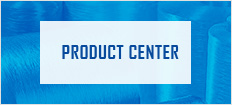Polypropylene safety rope: A lightweight and durable safety protection rope material!
Polypropylene safety rope is a protective rope material made from polypropylene fibers through a specific weaving process. With the lightweight property of polypropylene material and the strength advantage endowed by the process, it has become an important tool for safety protection in multiple fields, providing a basic guarantee for the safety of personnel and items.
From the perspective of raw materials and manufacturing processes, polypropylene safety ropes use high-strength polypropylene filaments or short fibers as the base material. These raw materials themselves have good tensile strength and wear resistance, which can meet the basic strength requirements of protective scenarios. During the production process, polypropylene fibers need to be woven into ropes through multi-strand weaving techniques. Common weaving methods include eight-strand weaving, twelve-strand weaving, etc. The tight weaving structure can ensure uniform force distribution on the rope body and reduce the risk of local breakage. Some polypropylene safety ropes will also undergo post-treatment processes, such as anti-ultraviolet coating and wear-resistant impregnation, to enhance their durability in complex environments and extend their service life.
In terms of core performance, the advantages of polypropylene safety ropes lie in the balance between lightweight and practical protection. Its density is less than that of water. Under the same length, its weight is much lighter than that of traditional cotton ropes or synthetic fiber ropes, making it convenient to carry and operate. It is especially suitable for scenarios that require frequent movement or high-altitude work. Meanwhile, the rope body has a relatively high breaking strength and can withstand a certain amount of weight impact. It is less likely to break when personnel are protected or items are fixed. In addition, polypropylene material has good chemical corrosion resistance. When in contact with common chemical substances such as acids and alkalis, its performance is not prone to decline. Moreover, it has low hygroscopicity and is not prone to mold or deterioration in a humid environment, maintaining stable protective performance.
In terms of application scenarios, polypropylene safety ropes are suitable for a variety of protection requirements. In the field of outdoor operations, it can be used for safety protection of high-altitude workers and the setting up of temporary fences, etc., taking advantage of its lightweight feature to reduce the workload. In daily protection, it is suitable for binding and fixing items, temporary pulling, etc., such as auxiliary fixation during cargo transportation and emergency protection at home. In leisure scenarios, it can also be used as an auxiliary rope material for light outdoor equipment, such as securing tents during camping and for simple drying.
During use, the Polypropylene safety rope must follow the basic protection standards: Regularly check whether the rope body is worn or has broken strands, etc. If any damage is found, it should be replaced in time. Avoid long-term use in high-temperature or sharp object friction environments to prevent performance damage. With the refinement of protection requirements, the manufacturing process of polypropylene safety ropes is also being optimized. For instance, strength is enhanced by adjusting the weaving density, and colored rope bodies are developed to facilitate the distinction of uses, further adapting to diverse safety protection scenarios.
Shandong Huimin Taili Chemical Fiber Products Co., LTD. : http://m.zsbdx.cn/. The company specializes in the production of: polypropylene high-strength filament, polypropylene colored filament, polypropylene fiber, polyester fiber, polyacrylonitrile fiber, polypropylene mesh fiber, safety rope, safety net, etc. Stay tuned!



